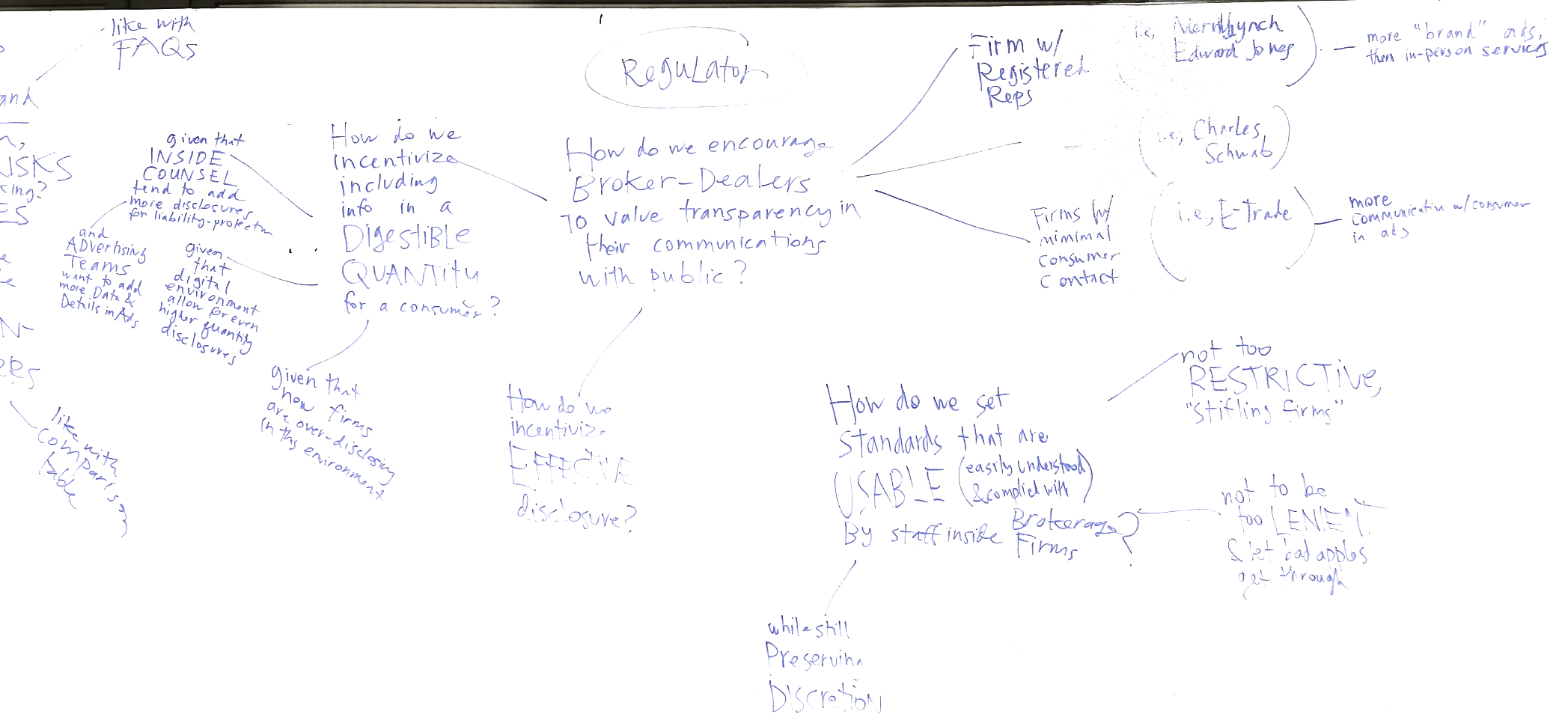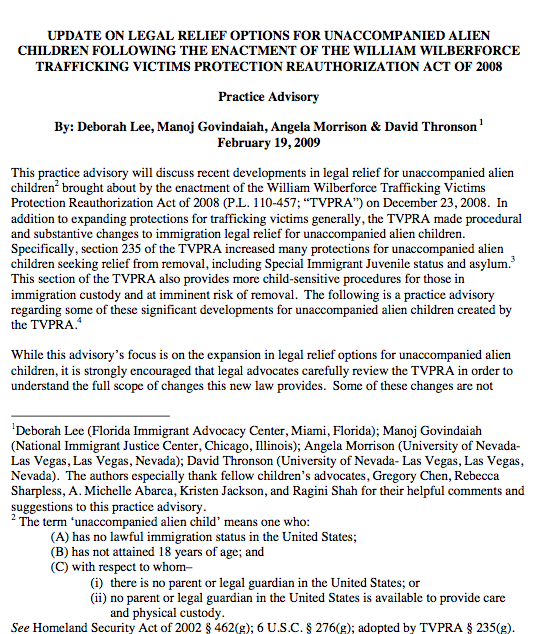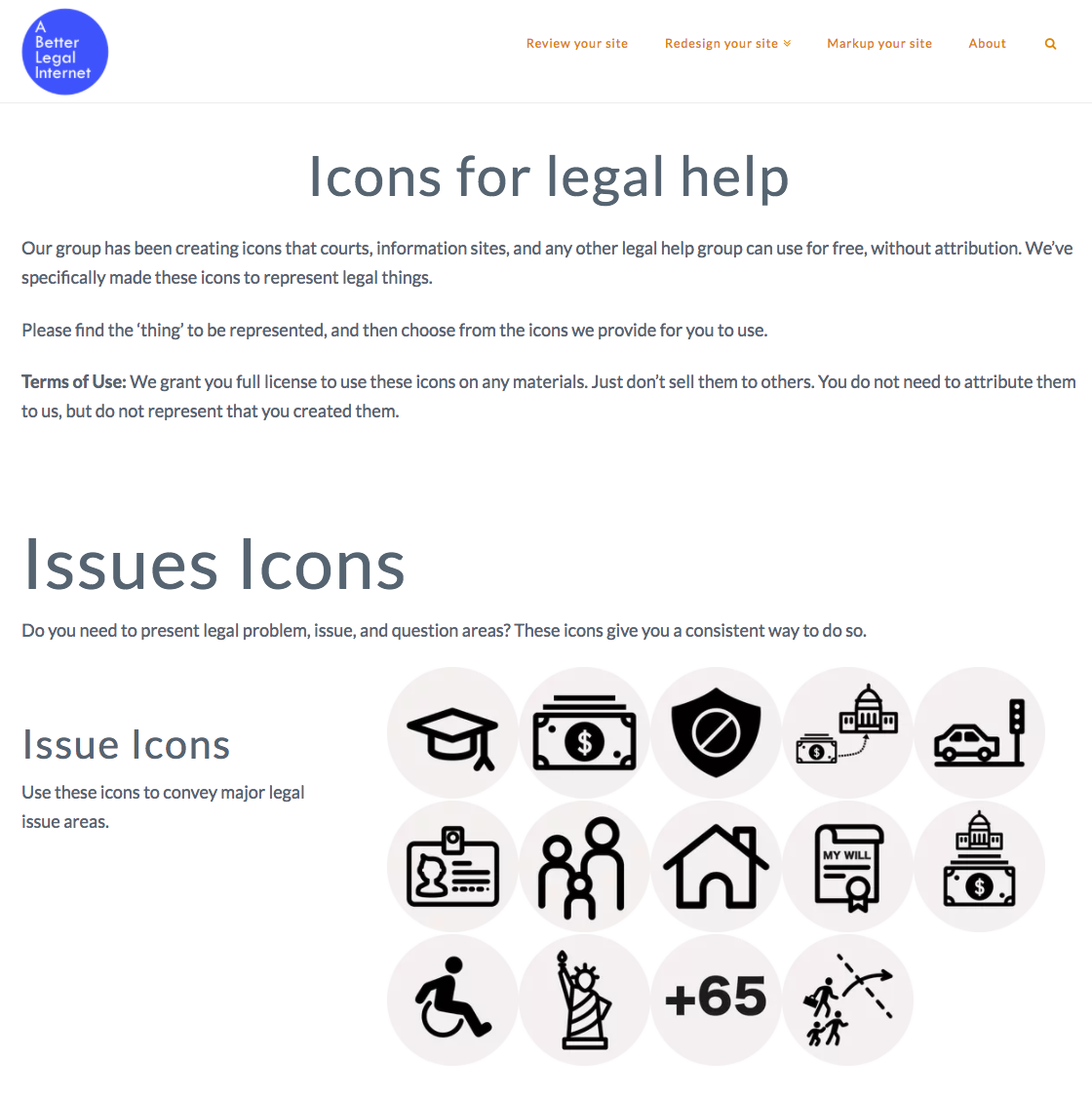Here is another check-in post (following up from a previous one) from this quarter’s class on Exploding the Fine Print: designing better legal disclosures for financial products.
These whiteboard images capture some of our initial research into what three core stakeholders in the disclosure relationships care about:
- The End User of the disclosure, who is supposed to use the legal communication to understand the system they are in and make smarter decisions
- The Regulator who uses a mandatory disclosure requirement to try to achieve policy outcomes, of protecting the end user from misleading product advertisements or poor decision-making, and of helping create a level and transparent playing field for the companies competing for users to use their product
- The Company (in this case the Broker-Dealers) who are hoping to both get end-users to use their product, and to satisfy the Regulator’s requirements and not get in trouble with them.
Here are some mindmaps fleshing out their perspectives, needs, and traits in more detail.

 And then here is a first spurt of brainstorming about what could be better — some new models that we might explore in our work.
And then here is a first spurt of brainstorming about what could be better — some new models that we might explore in our work.
Ideas for helping the end user comprehend and make smarter decisions:
- Ratings, with gold start and bronze star
- Checklist of what they should look for
- Nutrition label of how the financial product measures up on key factors
- Quick cover sheet summary of all the key details they should know
- Templates of the disclosures, so at least they all look the same and have the same headings, formats, and composition
- Give more white space, more groupings, and bigger font text — as required to be ‘effective’, to combat the over-cramped and tiny text in long paragraphs phenomenon
- Word limit to keep the content at the right balance of simplicity and comprehensiveness
- Force the user to read and comprehend the disclosure terms before they can move on, make a purchase, or do some other task they want to do
- Make modular disclosures that adjust based on the user’s expertise, tech-platform, and other core traits
- Force the user to move from mobile to a bigger screen to see the disclosure
Ideas for helping the companies and regulators be in more sync about good disclosure practices:
- Awards from a body that is a neutral third party, for best disclsoures
- Other recognition of ‘good disclosures’, or consistently good behavior
- An end-of-the-year report from the regulator that shows exactly what failed, and what worked — drawing out core themes and practices
- An If-Then schematic, of if you are saying or communicating this in your ad/site, then you must include this disclosure
Finally, here is our first draft of our research plan, of what we needed to research further.




